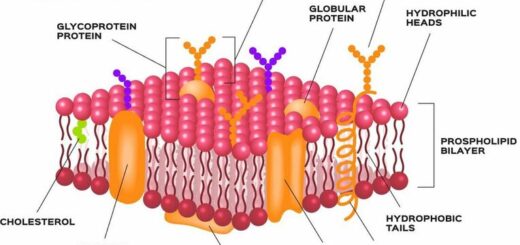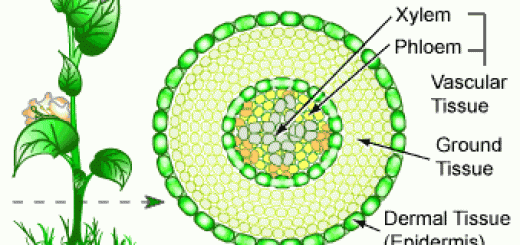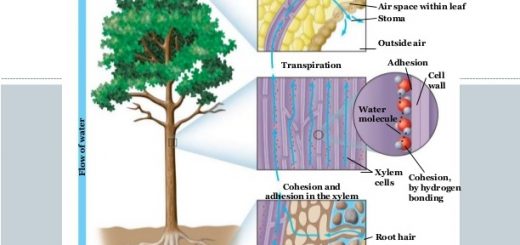Genetic code, formation of amino acid code and Steps of Protein synthesis
Genetic code is a particular sequence of nucleotides on DNA that is transcribed into a complementary sequence in triplets on mRNA, The mRNA goes to the ribosome, where it is translated into a particular sequence of amino acids in a polypeptide chain which makes a particular protein.
The number of nucleotides that are responsible for the formation of the amino acid code
We know that there are 20 kinds of amino acids, There are only four nucleotides involved in the structure of both DNA and RNA, and there must be at least 20 different genetic codes to specify the 20 amino acids.
If we consider that the genetic code is:
- Single (One letter): each nucleotide represents an amino acid code, So the possible code words are 4 codes, then they form 4 amino acids only (A, C, G and U) (this is impossible).
- Double (Two letters): each two nucleotides represents an amino acid code, In all possible combinations of any two nucleotides, it gives 4² = 16 different code words (this is impossible).
- Triple (Three letters): tach three nucleotides represent an amino acid code (possible), The number of codes will be 4³ = 64 different code words, then there is more than one codon for most of the amino acids, except methionine (more than enough to produce a unique code word for each amino acid).
In 1960, there are considerable evidences of a triple code, but reaching which sequence of three nucleotides coded for which amino acid, that was called “codons” in 1955, The smallest theoretical size for a code word in DNA is three nucleotides, So the genetic code is triple.
The genetic code of the amino acid is called “codon”, Codon is a genetic code that consists of three nucleotides on the mRNA strand and represents the code for an amino acid, There is only one codon for the starting of the protein synthesis which is called “start codon” (AUG), There are three “stop codons” (UAG, UAA and UGA) at which protein synthesis mechanism stops and gives a signal.
The genetic code is universal or general because the same codons represent codes for the same amino acids in all the living organisms such as viruses, bacteria, plants, animals and fungi that have been examined, This is strong evidence that all the living organisms on Earth now have been originated from common ancestors.
The amino acids codons are code words found in mRNA, but the DNA codons (triplets) are the nucleotides whose bases are complementary to the amino acids codons.
Protein synthesis
Protein synthesis is a complicated process that includes the interference of several different types of RNA molecules, Synthesis of proteins takes place in three main steps, which are:
First: Translation process
- The mRNA binds to the small ribosomal subunit from the (5‾ ) end, where the first codon (AUG) is positioned correctly upward, ready for the initiation of the protein synthesis.
- The AUG codon paired with the anticodon of tRNA carrying methionine which becomes the first amino acid in the polypeptide chain.
- The large ribosomal subunit binds to the previous complex (small ribosomal subunit + mRNA + tRNA) and the reaction of protein synthesis itself begins.
The large ribosomal subunit has two sites (peptidyl (P) and aminoacyl (A)), Where tRNA can bind, Methionine is the first amino acid in the polypeptide chain, because the initiation codon on the mRNA is (AUG) which represents the code for methionine found at the site of peptidyl (P).
Second: Polypeptide elongation
The polypeptide elongates by a cycle of three steps:
- The anticodon of another tRNA binds to the next complementary codon on the mRNA in the aminoacyl site (A), carrying the second amino acid in the polypeptide chain.
- The peptidyl transferase reaction takes place which results in the formation of a peptidyl transferase enzyme that is an integral part of the large ribosomal subunit, The first tRNA is now empty and leaves the ribosome, and may pick up another methionine, but the second tRNA is holding both amino acids.
- The ribosome moves along the mRNA, where the (A) site will be empty, this brings the next codon (amino acid) to the ribosome’s (P) site, The cycle starts over again, where the anticodon of the appropriate tRNA binds to the codon on the mRNA, bringing the third amino acid at the (A) site, The growing polypeptide chain is attached to the newly arrived amino acid that is carried on the third tRNA and the sequence repeats.
Peptidyl transferase reaction is a chemical reaction that occurs in the ribosomes and results in the formation of a peptide bond between an amino acid and the next amino acid by the help of the peptidyl transferase enzyme that catalyzes this reaction.
Third: Stop of protein synthesis
- Protein synthesis stops when the ribosome reaches a stop codon on the mRNA, A special protein called “releasing factor” binds to the stop codon, and causes the ribosome to leave the mRNA and the two ribosomal subunits separate from each other.
- As soon as the (5‾ ) end of the mRNA emerges from the ribosome, it may bind to another small ribosomal subunit which initiates the protein synthesis again.
The releasing factor is a protein that binds to the stop codon on the mRNA, causing the ribosome to leave the mRNA and the two ribosomal subunits separate from each other to release the formed polypeptide chain.
Each mRNA molecule typically has up to 100 ribosomes attached to it, where they translate its message, as they move along the mRNA, One mRNA with many ribosomes attached to it forms a cluster called “polyribosome” or “polysome”.
Polyribosome is the attachment of one mRNA molecule with many ribosomes that may reach 100 ribosomes and each translates the message, as it moves along the mRNA.
DNA, Ribonucleic acids (RNAs), Protein synthesis and types
Molecular technology (Genetic Engineering) advantages, Techniques and uses
Regulation of the cell cycle, DNA synthesis phase, Interphase & Mitosis
Importance of Nucleosides, Nucleotides, Purines, Pyrimidines & Sugars of nucleic acids



